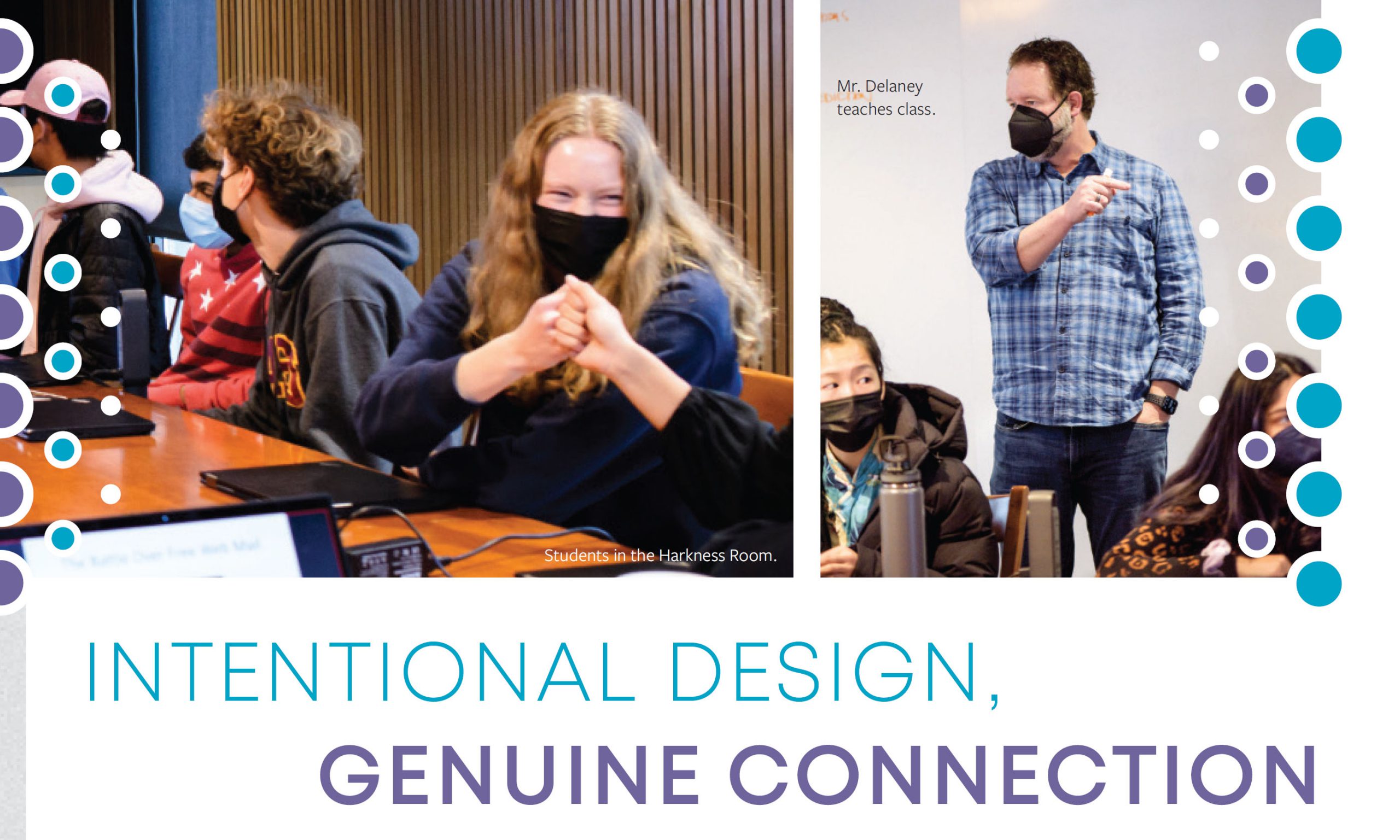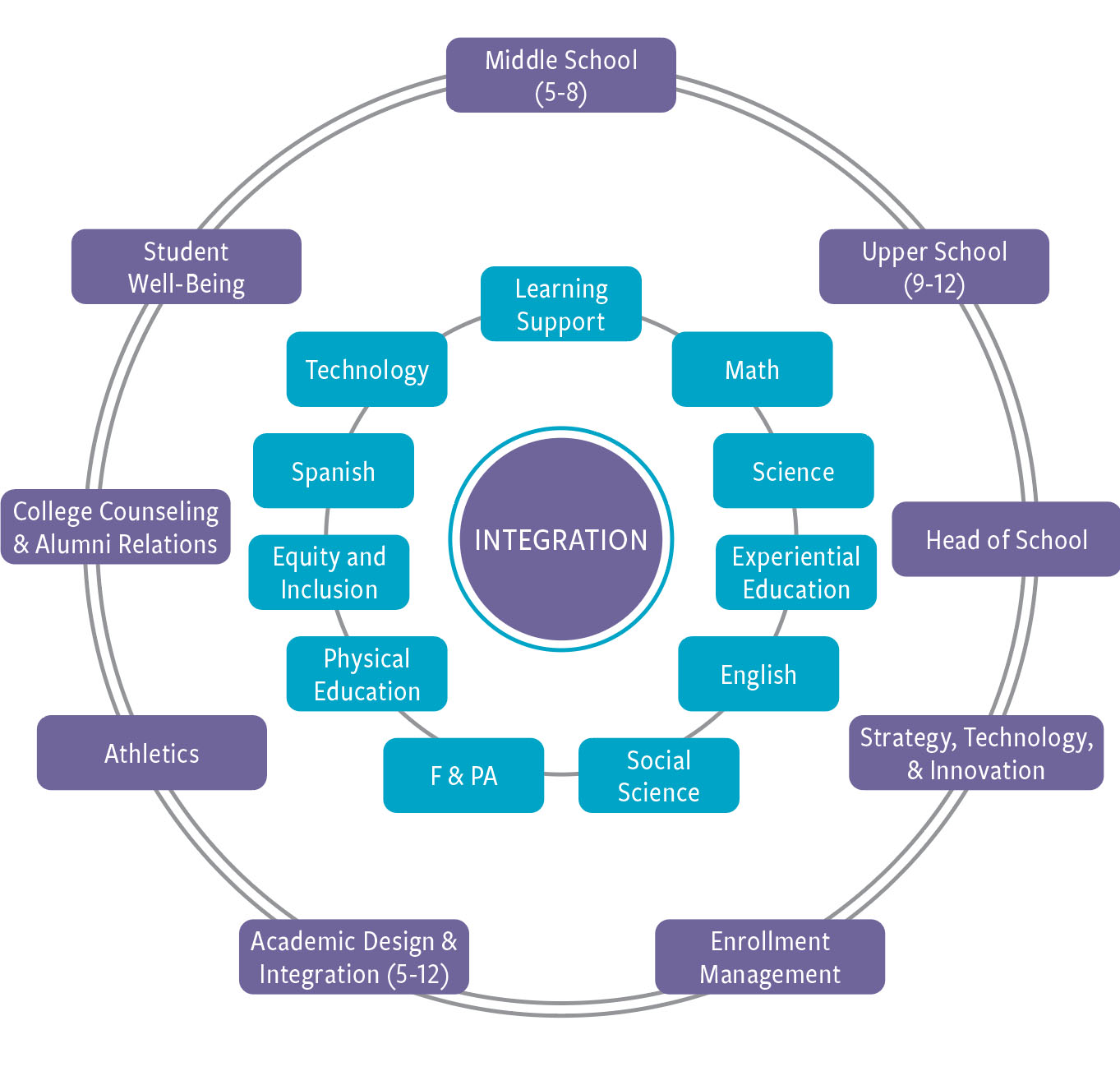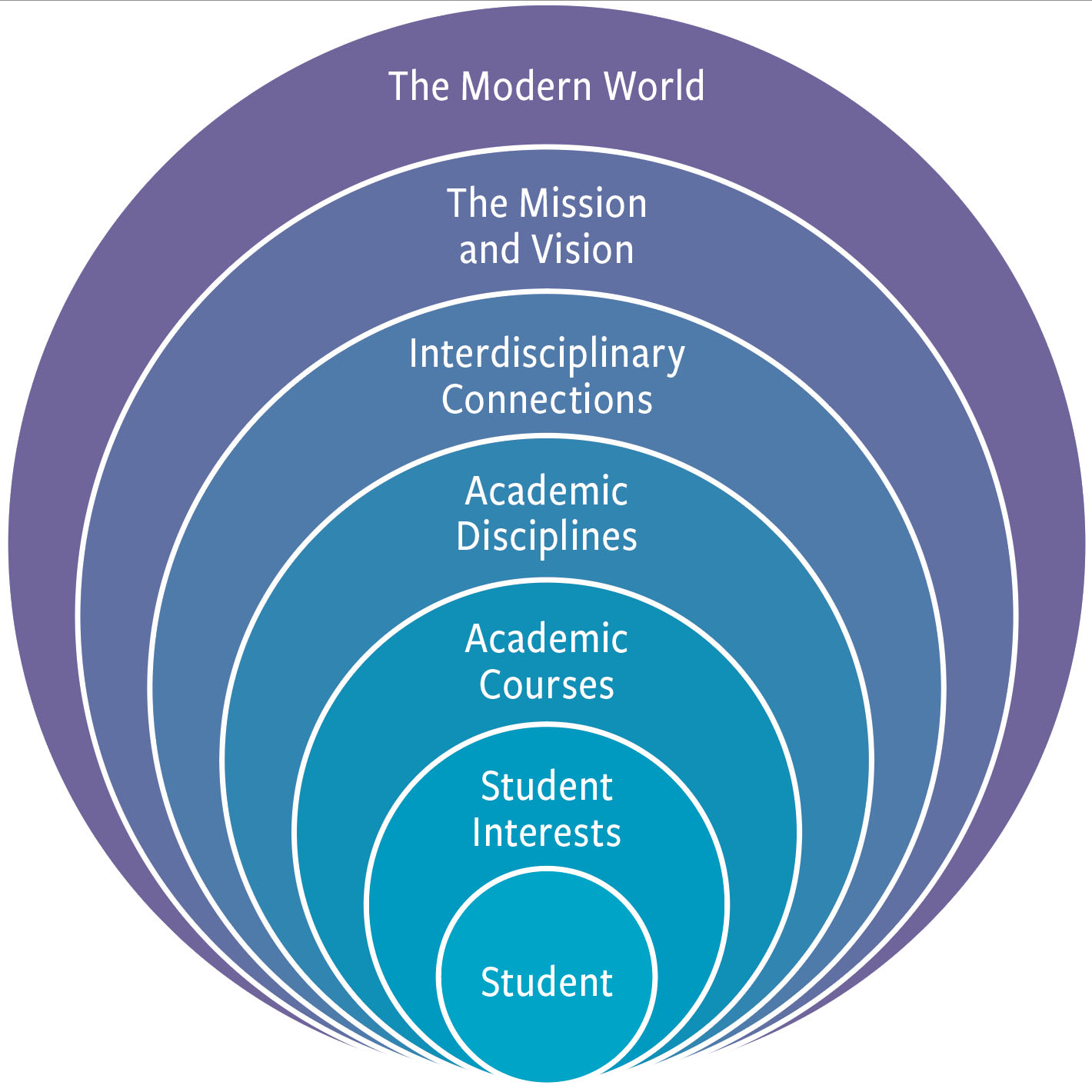
By Matt Delaney, Director of Academic Design & Integration
Language and structure define and fuel human development. What you call things and how you design them sends signals to people, and over time that language and those structures gain meaning. When people, both internal and external to our community, ask me what I do at Eastside Prep, I reply that my work is focused on academic design & integration. Generally, I get a response that includes an eyebrow raise and a quizzical look. Then one of two things happens, the conversation moves onto a new topic, or a second question emerges, What do those things mean? I explain that I help facilitate and steward Eastside Prep’s practice of making connections between people and ideas, a sample of which includes:
- Facilitating the design, maintenance, and evolution of each academic discipline and its respective courses.
- Integrating and weaving the school’s Modern World Literacies into the core academic program
- Co-facilitating the Academic Design Group (with the Associate Head of School for Middle School and Student Support Services, Sam Uzwack, and Head of Upper School, John Stegeman)
- Designing, finding, and funding pedagogical and professional development for faculty members
- Onboarding for new faculty and staff
INTEGRATION IS A CONCEPT WITH A MYRIAD OF DEFINITIONS AND APPLICATIONS. DISTILLING IT TO ITS ESSENCE, INTEGRATION MEANS CONNECTION, AND/OR THE DEPTH OF A CONNECTION.
Intentional academic design and openness to integration are two immutable EPS values, and part of what makes EPS distinct.

ACADEMIC DESIGN & INTEGRATION GROUP
ACADEMIC DESIGN
Intentional design has always been at the fore of what we do as professionals and as an institution. At its core, academic design is the process by which the student-centered experience is continually evolved and refined.
Mapping to an inquiry-based approach, as faculty members we ask ourselves and each other:
- Who are our students and what do they need?
- What problems can we solve to improve the student experience?
- What solutions can we quickly prototype and launch to get feedback?
- How can we test and reflect on the student experience we’ve designed and constructed, so that we can continue to improve that experience?
INTEGRATION | CONNECTION
Integration is a concept with a myriad of definitions and applications. Distilling it to its essence, integration means connection, and/or the depth of a connection. As faculty, much of our processing and dialogue is focused on connection asking ourselves and each other:
- How can we connect different parts of the school program more elegantly?
- How can we de-couple elements of the program that are constraining each other?
- How can we deepen connections between people, ideas, and the mission and vision of the school?
In a network, points of connection happen at nodes, or hubs. These are places where things intersect and connect. We know that EPS culture is not fully expressed in the silo of each academic discipline, or in separate Middle School and Upper School experiences. EPS culture and meaning are derived by how the different domains of knowledge and experience are knit together by the students and the faculty.
THREE LEVELS OF INTEGRATION
At EPS, the first priority is to connect people to people, and subsequently, to connect people to ideas. To do this we focus on three levels of integration.
The first level of integration is the connection of students’ interests and emergent curiosities to the content of our courses.
The second level of integration is identifying connections between different academic disciplines and courses.
The third level of integration is making connections between the people and ideas being explored at EPS and the modern world outside of EPS.
Each of these three levels seek to create relevance for students.
IN THE EARLY DAYS OF EPS, INTERDISCIPLINARY INTEGRATION WAS PERHAPS THE MOST TALKED ABOUT IDEA AMONGST THE FACULTY. TEACHERS AND STUDENTS ARE STILL LOOKING TO FIND CONNECTIONS BETWEEN DIFFERENT ACADEMIC DISCIPLINES.

LEVELS OF INTEGRATION
INTEGRATION LEVEL 1 | INTERESTS AND CURIOSITIES
Students arrive to EPS, and to each classroom, with a set of established interests, and their natural curiosity about how the world works. As they move through the EPS program they are exposed to more ideas and skills, which contributes to a feedback loop that fuels the expansion of their interests and their expertise. With that expansion, students are much more likely to choose/opt into the things with which they are most interested. Those choices build agency.
INTEGRATION LEVEL 2 | ACADEMIC DISCIPLINE & COURSE CONNECTIONS
In the early days of EPS, interdisciplinary integration was perhaps the most talked about idea amongst the faculty. Teachers and students are still looking to find connections between different and new academic disciplines.
Twenty years later faculty members pursue integration, and ask students to pursue it with us, for a few different reasons. The first reason is that making connections between different academic disciplines and courses helps to reinforce the concepts students are learning. As a student, if I’m going to learn what a system is in science it’s helpful to see what a system is in political science.
Our second reason is that because we are living in an accelerating world, we know there are many academic disciplines that do not yet exist, and that our students need practice identifying and exploring those boundaries between new and emerging disciplines.
INTEGRATION LEVEL 3 | UNDERSTANDING AND NAVIGATING THE MODERN WORLD
As I’ve written in previous articles, when I was in high school, I had the false impression that the function of school was to teach me how the world worked. I felt, first, bored; second, disillusioned; and finally, let down; as I found that many of my classes lacked relevance or application.
None of my math teachers could tell me why I was learning the math I was learning, or why I was exploring the history I was exploring. No one explained to me that even if relevance and application were missing, that the critical thinking we were doing in classes was great practice for more disciplined thinking and understanding in the future.
Either I landed in a classroom with a unique teacher who explained why we were doing what we were doing, or it was incumbent upon me to figure out what the reason was for learning something.
At EPS we often say that we are designing and building the school experience that we wish we had experienced as adolescents and young adults. Relevance and application are two concepts we use to guide our thinking.
EMERGENT PROPERTIES
Connections create positive feedback loops, and positive feedback loops enhance connections. Imagine a student who enters an EPS classroom and sees a question on the whiteboard. The question causes a tension in the student’s mind. Then the student is asked to think about why the topic or question interests them, how the topic or question can teach them about how the world works, and how their understanding of the topic or question can be enhanced by making connections to other classes.
In this scenario, that question is no longer static, but dynamic. The student has a personal connection, and a reason for wanting to understand how the topic or question is connected to how they see and understand the world. Over time, the student understands that by making connections between what they know and what they want to understand better results in a greater depth of comprehension and understanding. Intentional academic design and a focus on integration help the whole to be greater than the sum of the parts, and reinforce the expectation that language, structure, and meaning will continue to evolve.

